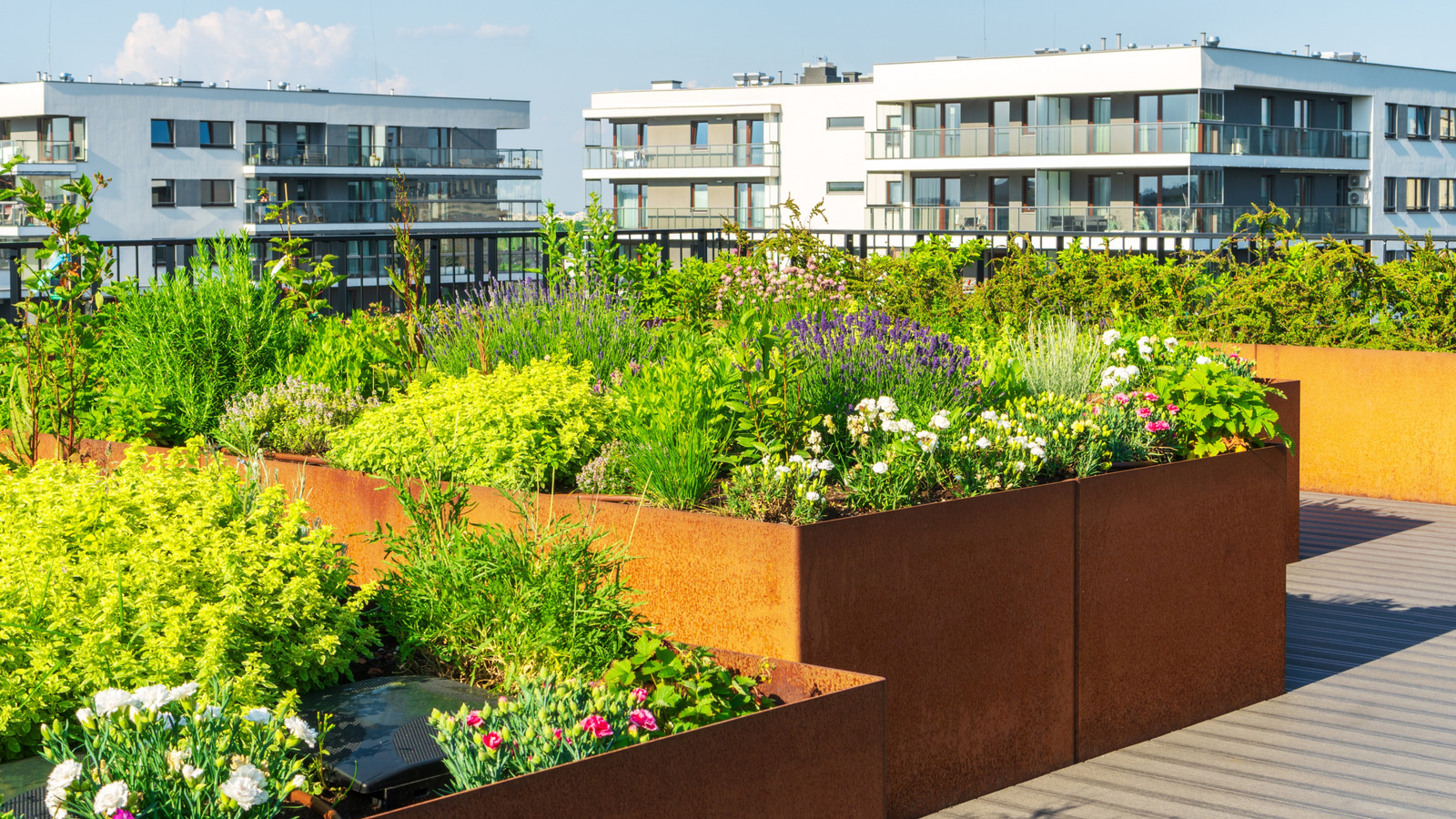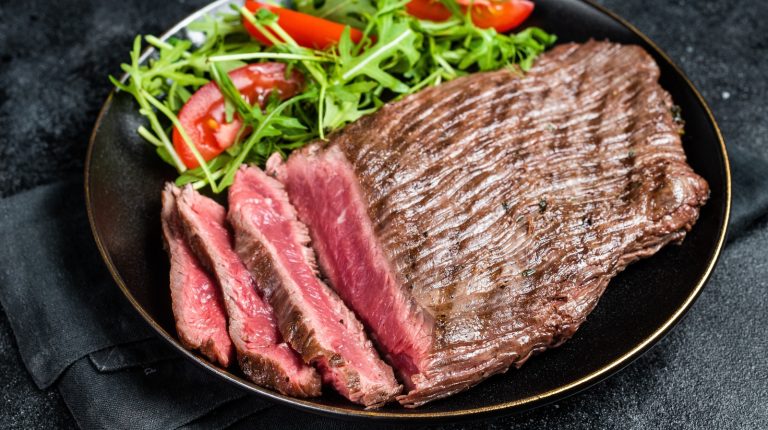We may receive a commission on purchases made from links.
While quite a few herbs are easy to grow indoors year-round, nothing beats summer for growing herbs outside. It’s delightful to bake with fresh herbs, and they’re accessible even to beginner gardeners. “Herbs are among the most rewarding plants to grow — many are low-maintenance, fast-growing, and highly productive,” says James S. Mastaler, founder and CEO of Pistils & Pollen. “They don’t require much space, so they’re ideal for small gardens, balconies, or even sunny windowsills.” With so many uses, from cooking to preservation to pollinator support, they can’t be beat.
Plus, having fresh herbs on hand is unbeatable. “Fresh herbs are expensive at the store, and they often wilt in the fridge before you can use them up,” says Marissa Stevens, a recipe developer and founder of Pinch and Swirl. “When you grow your own, you can snip exactly what you need, exactly when you need it, and the flavor is better.” And, she says, there’s just something about walking out to the garden to cut a few sprigs of basil or thyme for the cookpot. “It adds a freshness that dried herbs just can’t match.”
As if that’s not enough, they’re beautiful, good for pollinators, simple to dry, and applicable to dishes ranging from cocktails and appetizers to dinner and dessert. Lastly, you can’t beat the cost savings. “To get a small bunch of herbs in the grocery stores is expensive compared to buying a $4 to $6 plant,” says Anna Hackman, herb farmer and owner of The Naked Botanical. With that in mind, here are 15 of the easiest herbs to grow today.
Oregano
One of the most delicious and one of the easiest herbs to grow, oregano is an extremely varied species, coming in a wide range of sizes, shapes, colors, fragrances, and growing habits. Because it is so flavorful, it can add a great deal of depth to a dish.
“Oregano is part of the flowering mint family, and has been used for culinary and medicinal purposes,” says Jessie-Sierra Ross, author of “Seasons Around the Table; Effortless Entertaining with Floral Tablescapes & Seasonal Recipes.” It’s found growing wild throughout the Mediterranean, she says, which is why it “thrives as a ground cover in a warm climate. This savory herb is delicious on pizza and in sandwich sprinkles, but is an important part of pesto and chimichurri as well.”
Its extreme flavor profile, a bit peppery, minty, earthy, and woodsy all at once, makes it a great way to season food without a lot of sodium. “Having herbs right at your fingertips can also keep you healthier,” says Kayla Birdsong, CEO of Fresh Food Connect. “You’ll find yourself reaching for healthy herbs to season your foods instead of salty flavor mixes.” Just make sure you keep oregano contained, as it can be a bit of a bully.
If you want to grow it from seed, you can get oregano as part of a garden mix, such as Sereniseed Certified Organic Herb Seeds. You can also buy it on its own, like Back to the Roots 100% Organic Oregano Seed Packet, or as a starter plant at a garden store.
Lemon balm
Another of the easiest herbs to grow, lemon balm is a member of the mint family that brings a lovely combination of citrus and minty flavor to your dishes. Plus, it is an abundant grower. “Nothing tastes better than fresh herbs, and you can easily dry them for use during the winter, make herbal blends, and freeze them in ice cubes for use in your soups and stews all year round,” Anna Hackman says. “In addition, when you grow herbs and they flower, they are great for pollinators.” You can direct sow it in your garden with a packet of Sow Right Seeds Lemon Balm Seeds for only a few dollars.
However, it is a prolific re-seeder. “If you don’t want a bunch of baby lemon balm, you should give it a trim when it flowers,” Hackman adds. “The flowers are tiny and look like baby white bells. Also, lemon balm tends to move. It doesn’t stay in one place.”
Also, note that most herbs need full sun. That means 6 hours a day or more, James S. Mastaler says. They also need well-draining soil that mimics their Mediterranean origin and good air circulation to avoid mold, rot, and pests. Finally, he adds, “Frequent harvesting encourages bushier, more productive growth, so don’t be shy about snipping regularly.”
Catnip
Okay, so catnip isn’t for you, specifically. But we’re here for our feline companions, are we not? Catnip is beloved by kitties because one of the compounds naturally produced by the plant (nepetalactone) mimics their happiness and reproductive hormones, which can result in everything from playfulness to snooziness. Plus, catnip is a pretty garden plant and serves to attract beneficial pollinators.
It’s also one of the easiest herbs to grow. Just make sure to give catnip enough space. “Crowding your herbs will lead to much smaller plants,” Jessie-Sierra Ross says. Plus, catnip can be a spreader, so you might want to put it in a container. “I’m a big fan of container gardening. If I’m planning on planting several herbs together, I reserve my largest pots for the job, so they have lots of room to spread out.” Just prep some soil in a pot, sow some Home Grown Catnip Seeds, and watch your furry friends go wild.
Bay
“Bay leaves are irreplaceable in many food cultures,” Kayla Birdsong says. “They’re a great example of a plant that can be both delicious in the kitchen and functional in the landscape.” Depending on where you live, she says, it can grow outdoors and will become a large, dense tree or bush. “Plus, it’s evergreen, so you’ll have bay leaves at hand any time of the year.”
Because bay leaves are difficult to grow from seed, you’ll probably want to buy a Bay Leaf Live Plant. Once you establish it in a pot or in the ground, though, you’ll find it among the easiest herbs to grow. It’s not fussy, but it does like well-drained, slightly acidic soil. As for watering, just check the top two inches of soil and water when they’re dry; especially important to keep in mind if it’s in a container.
Thyme
Cooking with thyme is easy, and as it turns out, growing it is highly accessible as well. “Thyme is a low-growing perennial with tiny leaves and a strong, savory flavor. It loves dry, well-drained soil and doesn’t need much water once it’s established,” James S. Mastaler says. “I grow it at the edge of raised beds where it can spill over, softening the border and suppressing weeds. It’s also cold hardy and can be harvested even into winter in milder climates.”
Moreover, Marissa Stevens adds — it’s super versatile in the kitchen. She loves both English thyme (this English Thyme Seed Packet will get you started) and lemon thyme, both for their ease of growth and for the range of dishes in which they work, from sauces and soups to veggies and meats. All you have to do, she says, is strip the tiny leaves from the woody stems, give a rough chop if you’re so inclined, and you’re good to go.
Mint
The inimitable flavor of mint is familiar to all, often from chewing gum, but also from desserts, drinks, and fragrant savory dishes, especially from the Mediterranean, Africa, and the Middle East. Marissa Stevens loves it in drinks such as mojitos or iced tea, as well as in the classic bulgar wheat dish, tabbouleh. “I sometimes muddle it with fruit and sugar for a quick dessert topping,” she adds. From chocolate mint to peppermint to spearmint, you have flavor options as well.
Of any herb on this list, mint is probably the easiest to grow overall. That makes it an aggressive spreader, though. “Mint is a thug,” Anna Hackman says succinctly. “I never advise anyone to grow mint in a garden bed unless you don’t care where it grows. It is a creeper and will fill out an area.” A better idea is to contain it, such as in Gardife Self Watering Large Plastic Flower Pots.
Sage
“We often think of sage as a Thanksgiving flavor, used for seasoning for turkey or stuffing, but this herb has many more uses and a long culinary and cultural history,” Jessie-Sierra Ross says. She uses the fuzzy leaves to flavor meat, deepen marinades with savory notes, or infuse cocktails.
Although sage is one of the easiest herbs to grow once established, it can be a bit tricky to start. You can try direct sowing Home Grown White Sage Seeds, which works in many gardens, but not all. Or you can water propagate, Ross says. “Using clean shears, locate a ‘node’ and snip a 6-inch-long piece of plant at a slight angle. Strip away the leaves from the lower third of the clipping, and place the cuttings into a small jam jar with clean water, away from direct sunlight.” Let it root for about two weeks, keeping an eye out for mold or discoloration, then plant it in the ground once you see small roots.
Sage may need more room to grow than you think, with some varieties growing as large as 3 feet by two feet. “Prune the plants in the spring to allow for new growth,” Anna Hackman says, but don’t prune too much. Never cut into the woody base, or it will not regrow and never prune more than a third of the herb at once.
Basil
Cooking with basil is as simple as can be. It has a delicious, spicy fragrance and a flavor that makes for easy application in a wide variety of dishes, from fresh to roasted to grilled. “I use it constantly in tomato-based dishes, pesto, and to finish sauces or salads,” Marissa Stevens says. “Best planted in warm weather, basil loves sun and regular trimming. Pinch off the top leaves often to keep it from flowering, which can make the leaves bitter.” If you want to harvest more at once, she says, you can put a bunch in a glass jar with a bit of water at the bottom, cover it loosely with a plastic bag, and leave it on the counter for a few days.
While basil isn’t one of the easiest herbs to grow from seed, you can try Home Grown Italian Basil Seeds if you have a bright, sunny yard with well-drained soil. It may be easier to buy plants from the nursery, however. Basil also takes well to containers. James S. Mastaler loves keeping his pots of basil near the kitchen for easy harvests so he can use it in his pesto and infused oils.
Lavender
Lavender might not be the easiest to grow, but among herbs, it is certainly one of the most beloved. Although you can use almost any herb in desserts, given the right recipe, some are more conducive to sweets than others, and lavender was tailor-made for goodies. Lavender ice cream, shortbread, and even sweet lattes are all delicious. When you harvest fresh stems, you can either use the purple flower heads right away or bundle and hang them upside down to dry. Some good cutters, such as the Gonicc 8″ Professional Premium Titanium Bypass Pruning Shears, can help here.
Note, though, that lavender can be fussy about the damp. “Lavender likes dry, sunny conditions and doesn’t love our northeast clay soil or cold, wet winters,” Anna Hackman explains of her Northeastern home. “So I only grow lavender that can endure our winters like a Hidcote variety.” If you mound it, amend the soil for good drainage, and prune it every spring, it will stay young and healthy for all your cooking and baking needs.
Cilantro
Cilantro is, to be frank, not one of the easiest herbs to grow. “This one’s a little trickier because it bolts quickly in the heat,” Marissa Stevens says. Once it bolts or produces flower heads, the flavor of the herb changes and becomes more bitter, already problematic since so many people find the flavor offputtingly soapy, including Ina Garten and Julia Child. Luckily, you can help manage the off-flavors. To keep it from flowering as quickly, Marissa Stevens says, “I plant it in partial shade. When it works, it’s incredibly rewarding. I use it in salsa, rice dishes, and curries.”
Kayla Birdsong agrees that cilantro needs some extra TLC because it has such a short growing period. If you’re sowing from Home Grown Cilantro Seeds or another seed variety, “Try to plant them in a series, a few weeks apart, or you’ll have a bumper crop when they all mature at once.
Parsley
Parsley is a garden favorite. It’s not only fairly easy to grow but also a biennial, which means if you plant it this year, it will come back next year too. “Flat-leaf parsley is more flavorful than curly varieties, and I find it’s more forgiving of varying conditions,” James S. Mastaler says. “It prefers regular moisture and rich soil and does best in partial to full sun. It’s a great companion plant, too, and attracts beneficial insects like hoverflies.”
Marissa Stevens also loves flat-leaf parsley for its flavor and versatility. She uses it in dressings and garnishes and appreciates that you can chop its stems as well as leaves, which makes sorting and picking easier. If you’re a curly parsley fan as well, try a one-two punch, such as this Sow Right Seeds Flat and Curly Leaf Parsley Seed Collection.
Chives
Chives require all but nothing, and in response, they provide an abundant harvest of fresh herbs and flowers year after year. “One of the easiest herbs to grow, chives come back reliably each year in my garden,” James S. Mastaler says. “Their slender leaves are great chopped fresh over just about anything, and their purple spring flowers are both edible and attractive to pollinators.” The only thing they really want is full sun. Give them that, and you’ll have thick bunches of mild, oniony goodness for half the year — or longer, in warm climates.
As for what to do with it? Marissa Stevens thinks the greens add a nice pop to eggs, potatoes, or dips. She loves the blossoms sprinkled on pats of butter for a pretty purple effect. You can also use the blossoms whole on salads, float them in soups, or garnish drinks, desserts, and cheese boards.
If you have too many chives, there’s an app for that. “Fresh Food Connect’s free mobile app connects home gardeners with community hunger relief programs, so excess homegrown produce gets to neighbors in need,” Kayla Birdsong says. “Gardeners can visit our website for more information about growing for hunger relief and to download the Fresh Food Connect app.”
Rosemary
“A woody evergreen shrub with extremely aromatic needle-like leaves, fresh rosemary is one of my essential herbs in the garden,” Jessie-Sierra Ross says. “Native to the Mediterranean, Portugal, and Spain, rosemary is a flowering shrub (if you let it get big enough!) that can be used in both sweet and savory applications.” Marissa Stevens loves its woodsy, herby flavors for grilling, roasting, potatoes, and focaccia.
As for growing it, rosemary is pretty easy. You can try seeding it at home outdoors using a Home Grown Rosemary Seeds Pack, though you’ll likely have more luck starting it inside in a seeding tray and then moving it outside. The MIXC Seed Starter Tray Kit is a good option. Once you get it in the ground, though, the herb is hardy and low-maintenance. As long as it gets 6 to 8 hours of sunlight a day, Kayla Birdsong says, it’s happy even indoors. This is beneficial for super-cold climates where it won’t survive the winter.
Dill
Dill is widely adored for its uses in a huge range of dishes. “Dill weed (leaves), dill flowers (umbels), and dill seeds are common ingredients in cultures across the world,” Jessie-Sierra Ross says. “It is often used in creamy sauces for fish, chopped into salads, simmered into soups, or paired with roasted starchy vegetables like potatoes.”
Naturally, dill is critical in pickles as well, so if you’re a canner, you can save lots of money growing it in your yard. Its unique grassy and slightly sweet flavor, with hints of fresh citrus zest, make it perfect as both an ingredient and a garnish, Ross adds. “Bonus tip: Try it in chicken soup as a flavor enhancer!”
If you’re a brave soul, try growing dill from a seed packet. Home Grown Dill Seeds is highly reviewed. However, this writer has always found more luck with starts from the garden center. Dill can be forgiving, but not in all climates and soil types, so it’s down to experimentation.
Tarragon
Its popularity bolstered by a mild, pleasant anise flavor and scent, tarragon is one of the easiest herbs to grow in your own backyard. It is productive, delicious, pretty when it blooms, and may even attract some pollinators. To make sure it thrives, choose its location carefully. “Proper watering, appropriate sunlight, and good drainage are key for a healthy and happy herb bed,” Jessie-Sierra Ross says. “When choosing your plant’s location, try to find an area that receives at least 6 hours of sunlight and has soil with a balanced pH level.”
If you don’t have any luck with traditional tarragon, consider a close alternative. “Tarragon is an excellent herb, but many people do not know that you can grow Mexican tarragon from seed,” Anna Hackman says. “It tastes just like French tarragon but is much cheaper since you are growing it from seed.”
On a final note, set yourself up for success when harvesting herbs. A good basket, such as the Fiskars Garden Harvest Basket or Hutzler Mini Colander Garden Basket, will help you keep delicate herbs protected while collecting in the garden.




